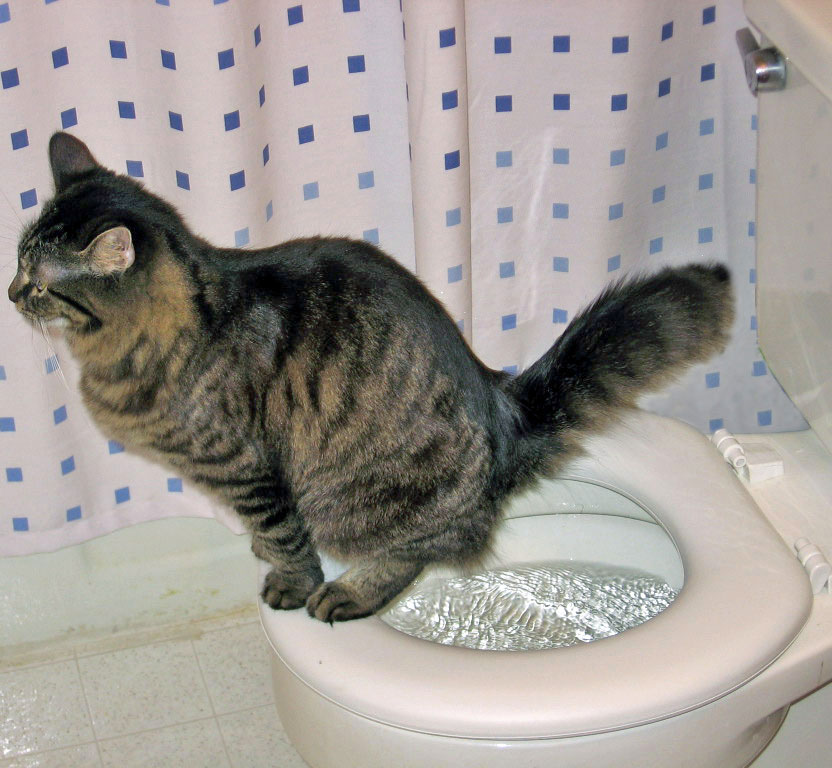Everyone may have their own individual conception when it comes to Don’t flush cat feces down the toilet.

Intro
As cat proprietors, it's essential to bear in mind exactly how we take care of our feline pals' waste. While it might seem convenient to flush pet cat poop down the bathroom, this practice can have detrimental effects for both the environment and human health.
Ecological Impact
Flushing feline poop introduces unsafe pathogens and parasites into the water system, posturing a substantial threat to marine ecosystems. These contaminants can negatively impact aquatic life and concession water top quality.
Wellness Risks
Along with environmental issues, flushing pet cat waste can additionally present health risks to human beings. Feline feces may have Toxoplasma gondii, a bloodsucker that can cause toxoplasmosis-- a possibly serious illness, specifically for expecting women and people with damaged body immune systems.
Alternatives to Flushing
Fortunately, there are safer and extra accountable means to throw away pet cat poop. Think about the adhering to alternatives:
1. Scoop and Dispose in Trash
The most typical technique of getting rid of pet cat poop is to scoop it into a biodegradable bag and toss it in the garbage. Be sure to make use of a dedicated clutter inside story and dispose of the waste promptly.
2. Use Biodegradable Litter
Choose biodegradable pet cat clutter made from materials such as corn or wheat. These trashes are eco-friendly and can be safely thrown away in the trash.
3. Bury in the Yard
If you have a backyard, take into consideration burying cat waste in a marked location away from veggie gardens and water resources. Make sure to dig deep enough to stop contamination of groundwater.
4. Set Up a Pet Waste Disposal System
Invest in a pet dog waste disposal system especially developed for pet cat waste. These systems utilize enzymes to break down the waste, lowering odor and ecological influence.
Conclusion
Liable pet ownership prolongs past providing food and shelter-- it additionally entails proper waste management. By refraining from purging pet cat poop down the toilet and opting for alternate disposal techniques, we can lessen our ecological impact and secure human health and wellness.
Why Can’t I Flush Cat Poop?
It Spreads a Parasite
Cats are frequently infected with a parasite called toxoplasma gondii. The parasite causes an infection called toxoplasmosis. It is usually harmless to cats. The parasite only uses cat poop as a host for its eggs. Otherwise, the cat’s immune system usually keeps the infection at low enough levels to maintain its own health. But it does not stop the develop of eggs. These eggs are tiny and surprisingly tough. They may survive for a year before they begin to grow. But that’s the problem.
Our wastewater system is not designed to deal with toxoplasmosis eggs. Instead, most eggs will flush from your toilet into sewers and wastewater management plants. After the sewage is treated for many other harmful things in it, it is typically released into local rivers, lakes, or oceans. Here, the toxoplasmosis eggs can find new hosts, including starfish, crabs, otters, and many other wildlife. For many, this is a significant risk to their health. Toxoplasmosis can also end up infecting water sources that are important for agriculture, which means our deer, pigs, and sheep can get infected too.
Is There Risk to Humans?
There can be a risk to human life from flushing cat poop down the toilet. If you do so, the parasites from your cat’s poop can end up in shellfish, game animals, or livestock. If this meat is then served raw or undercooked, the people who eat it can get sick.
In fact, according to the CDC, 40 million people in the United States are infected with toxoplasma gondii. They get it from exposure to infected seafood, or from some kind of cat poop contamination, like drinking from a stream that is contaminated or touching anything that has come into contact with cat poop. That includes just cleaning a cat litter box.
Most people who get infected with these parasites will not develop any symptoms. However, for pregnant women or for those with compromised immune systems, the parasite can cause severe health problems.
How to Handle Cat Poop
The best way to handle cat poop is actually to clean the box more often. The eggs that the parasite sheds will not become active until one to five days after the cat poops. That means that if you clean daily, you’re much less likely to come into direct contact with infectious eggs.
That said, always dispose of cat poop in the garbage and not down the toilet. Wash your hands before and after you clean the litter box, and bring the bag of poop right outside to your garbage bins.
https://trenchlesssolutionsusa.com/why-cant-i-flush-cat-poop/

Do you like reading about Can You Flush Cat Poo or Litter Down the Toilet?? Try leaving a short review down below. We will be pleased to listen to your reactions about this content. Hoping that you visit us again later on. Sharing is nice. Helping others is fun. Thanks a lot for your time spent reading it.
More Details